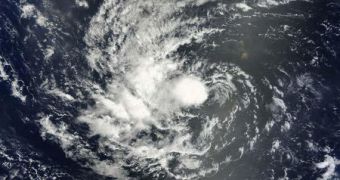Experts at the US National Hurricane Center (NHC) announce that a new tropical storm has developed on the Western African coast on September 8. The atmospheric event has been named Igor.
This is only the latest addition in a string of storms that have been developing all over the Atlantic Ocean at a brisk pace. With the hurricane season in full swing, weather researchers are keeping an eye on every formation that may turn deadly once around the United States.
According to predictions made by experts in the field before the onset of the new hurricane season, 2010 will see a multitude of large tropical storms, and potentially hurricanes, developing in the Atlantic.
This is why various groups have begun conducting studies in the Gulf and off the US southeastern coast, in a bid to determine the factors that make tropical storms and depression become killer storms.
It is widely known for example that some of these atmospheric events simply fizzle out after a few days, dissolving in medium or heavy rain showers and relatively intense winds.
But some of them to not go silent, but rather turn into hurricanes, which produce tornadoes, twisters, and cause widespread devastation. Sometimes, the storms also take tolls in human lives.
Studies conducted for determining precisely what causes these differences have thus far remained unanswered, but experts hope that the large numbers of storms this year will provide sufficient readings to obtain an answer.
The peak of the 2010 hurricane season is expected between late August and early October, and so we're currently right in the middle of it.
Estimates show that anywhere between 14 and 20 tropical storms will develop throughout the season, of which between 8 and 12 will develop into hurricanes. This should give scientists enough to work with.
Tropical storm Igor is no exception As soon as it formed, at 11 am ET on September 10, specialized networks and satellites established its location.
The storm was located some 465 miles (748 kilometers) west of the Cape Verde Islands, in the far eastern Atlantic Ocean.
Data showed the atmospheric event moving westwards, and featuring winds with speeds nearing 64 kilometers per hour (40 miles per hour).
The NHC estimates that, by Sunday, Igor will turn into a hurricane, OurAmazingPlanet reports.

 14 DAY TRIAL //
14 DAY TRIAL //